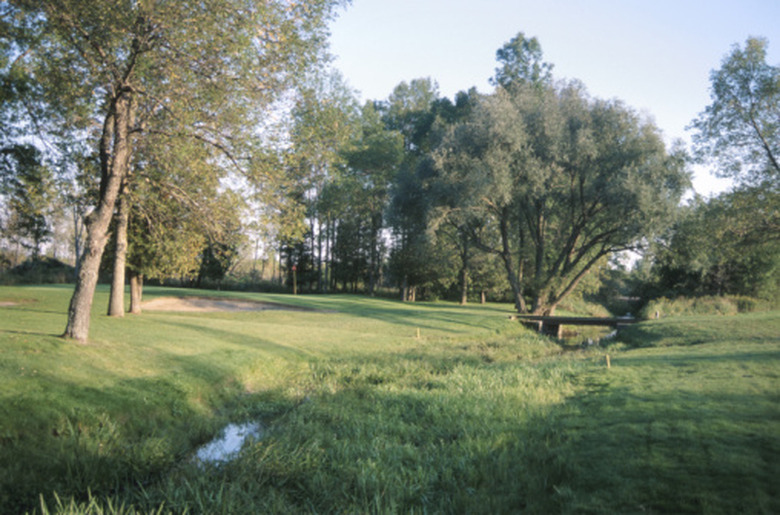How To Landscape A Drainage Ditch
Things Needed
- River rocks
- Shovel
- Grass seed
- Top soil
- Straw
- Erosion netting
- Ornamental grass
- Shrubs
- Flowers
Warning
Avoid adding shrubs near the ditch if they would block excess water from running into the ditch.
A drainage ditch provides a path for excess water and gives you more control over the amount of rain water that sits in your yard. Building a drainage ditch also solves mosquito problems and improves growing conditions for nearby plants and trees. If left untended, bare soil around a ditch erodes and weeds will detract from your landscape. Once constructed, you can landscape a drainage ditch with vegetation and rocks to improve the appearance of your yard.
Step 1
Spread a single layer of river rocks over the drainage ditch, if the bottom of the ditch is soil. The rocks should cover the bottom and 1 to 2 feet of the sides.
Step 2
Clear the area of weeds and root systems, and dig down about 2 inches deep. Mix native grass seed and top soil together in equal parts, and spread a 2-inch layer over the soil on the sides of the ditch. Secure erosion netting over the seeds with wooden stakes. Spread a thin layer of straw over the netting to keep the seeds moist until they germinate.
- A drainage ditch provides a path for excess water and gives you more control over the amount of rain water that sits in your yard.
- Spread a single layer of river rocks over the drainage ditch, if the bottom of the ditch is soil.
Step 3
Plant ornamental grass along the top rim of the ditch. Grasses are low-maintenance and can grow well in poor soil. They grow in a wide variety of heights, textures and colors, making it possible for you to disguise the drainage ditch behind thick foliage. Miscanthus, northern lights and feather reed are a few examples of grasses that tolerate moderate to moist soil.
Step 4
Add shrubs and hardy flowers around the highest areas of the drainage point to prevent erosion. Irises, meadow rue, azaleas and winter honeysuckle are examples of plants that can withstand poor growing conditions while adding color and contrast to the landscape.
